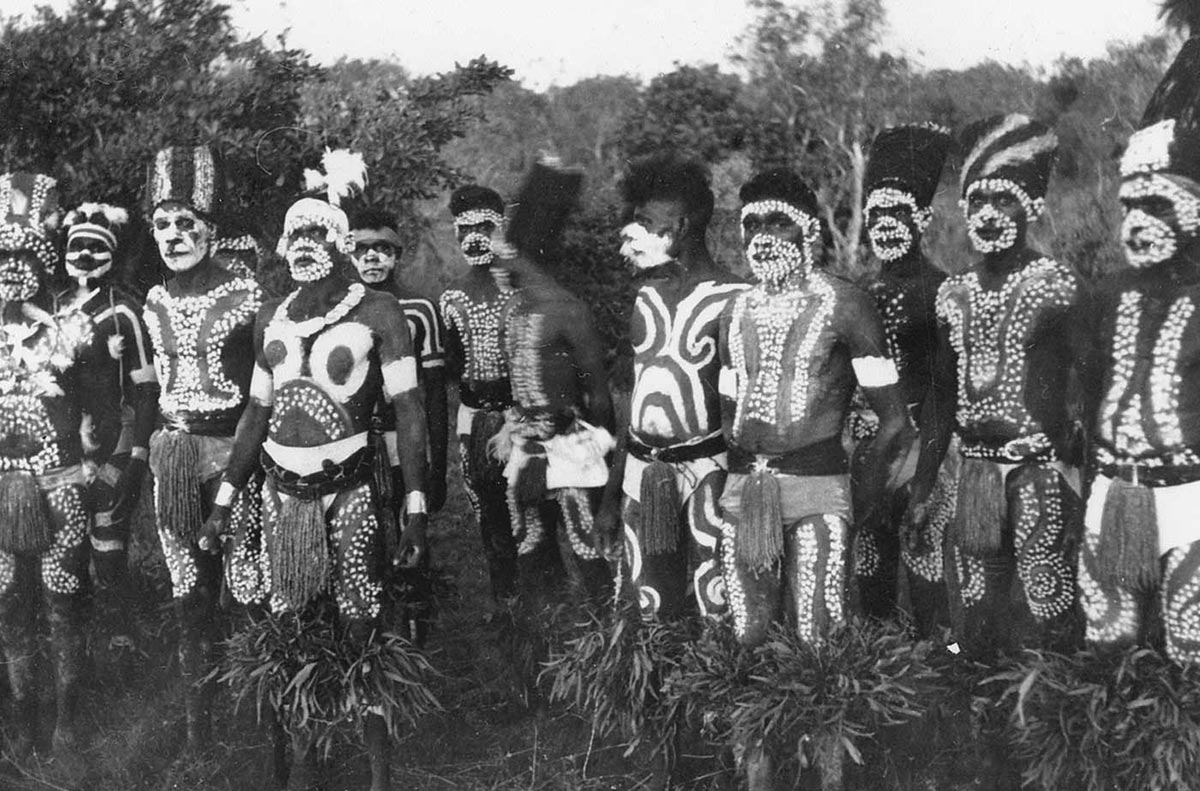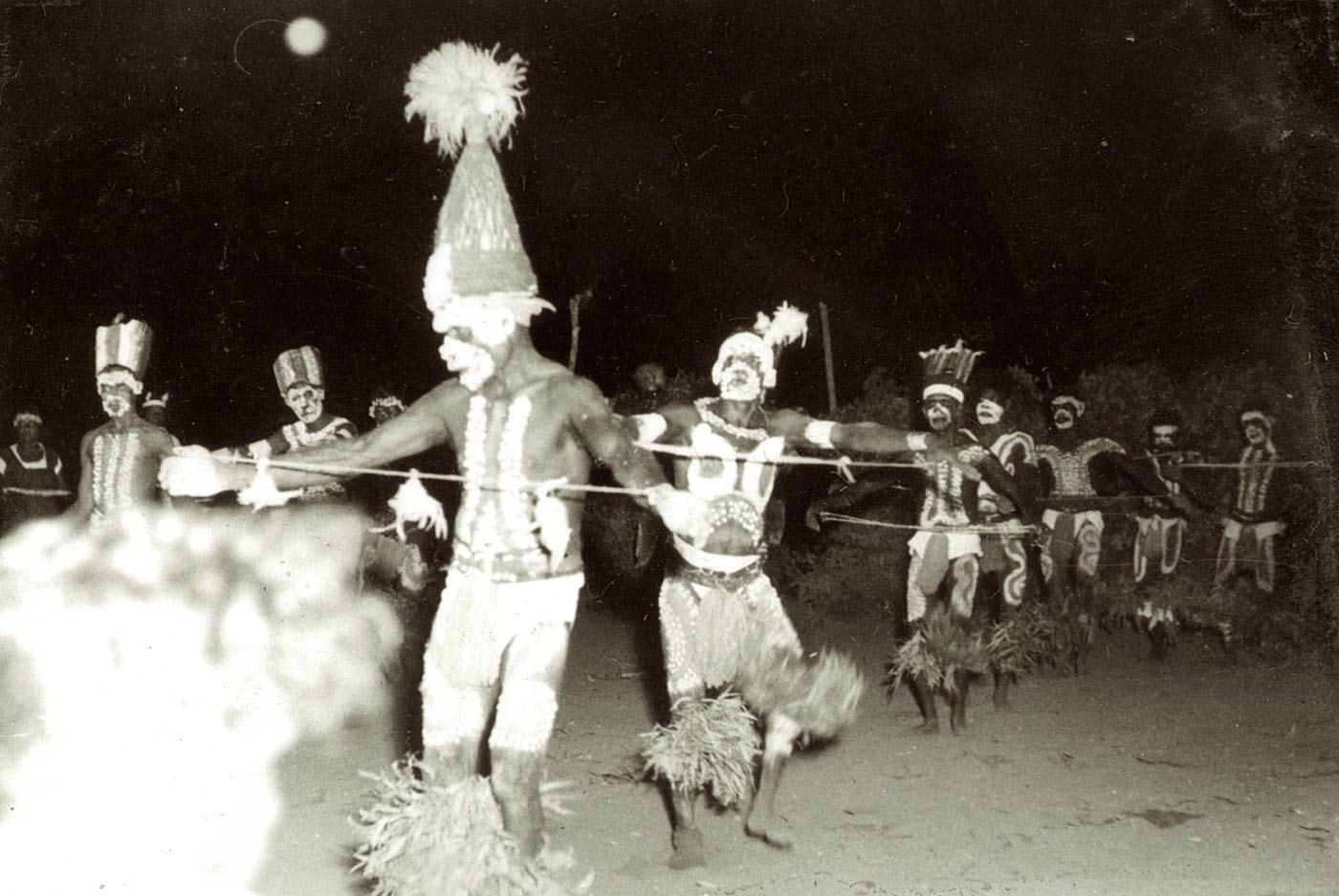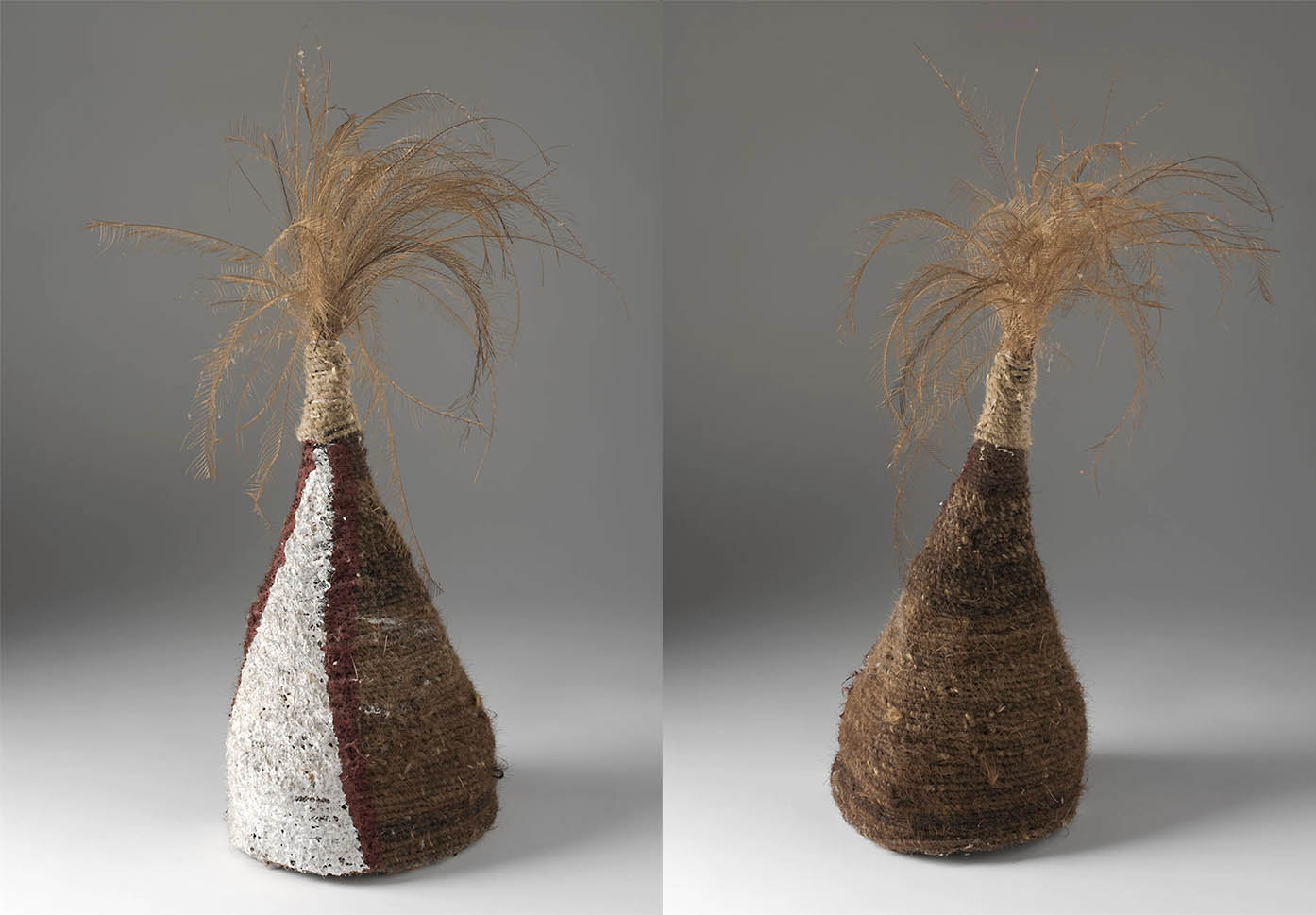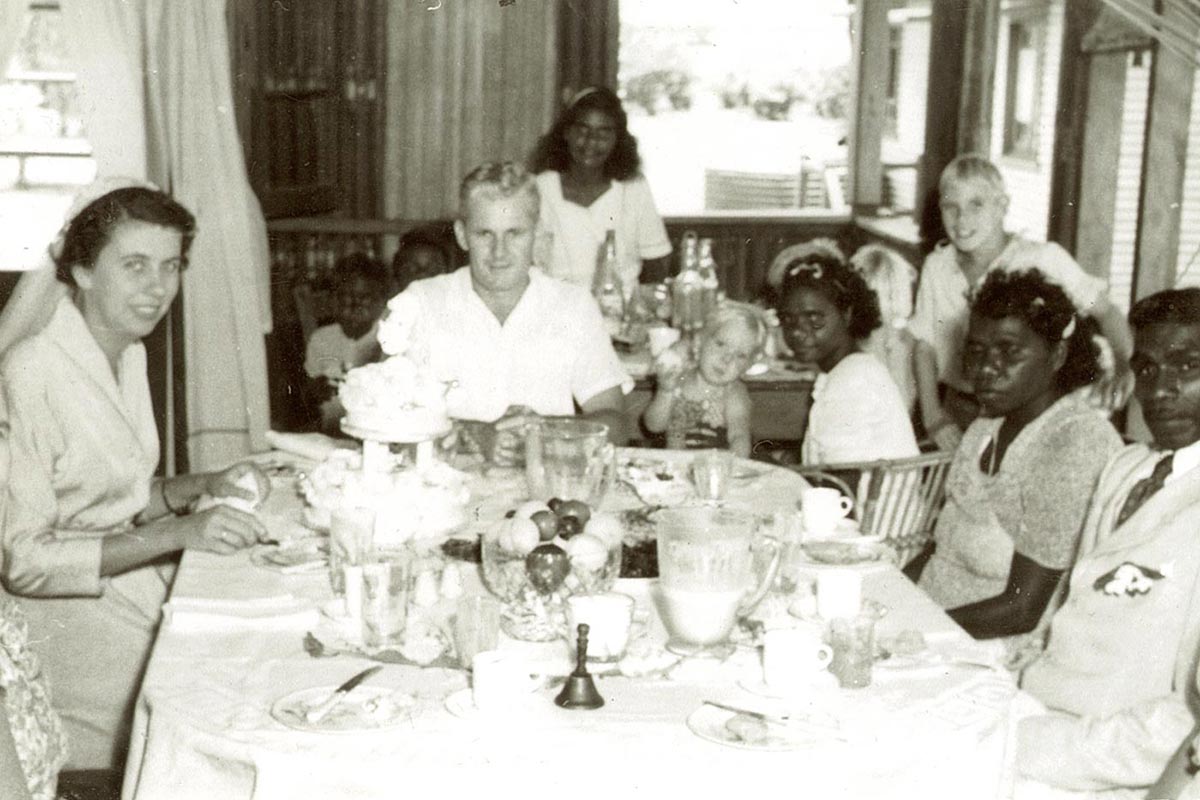This Mornington Island headdress was made by the Lardil artist and storyteller, Dick Roughsey (Goobalathaldin) OBE (about 1920–1985). It was a gift for Elsie and Keith de Witte who married in 1955.
Keith de Witte (1928–2007) was a former Second World War prisoner of war in Japanese-occupied Dutch East Indies, who was starting a new life in the Australian tropics.
Roughsey was the best man at the de Witte's wedding, held on Mornington Island in the Gulf of Carpentaria.
Headdress
The headdress is a conical shape made from coiled hair, with emu feathers protruding at the point. Around one-third of the headdress is covered in a band of white paint, bordered by a deep red stripe on either side. It is possibly one of the oldest Mornington Island headdresses in the Museum's collection and is in excellent condition for its age.

Karumba Lodge
Keith de Witte employed Dick Roughsey at Karumba Lodge, then run by the Ansett airline company, in the Gulf of Carpentaria in the 1950s. It was here Roughsey was introduced to Percy Tresize, a pilot and explorer.
Tresize was on one of his trips to the Gulf, and had been commissioned to decorate the bottom of the Karumba swimming pool. Roughsey came across Tresize painting a mermaid on the pool and asked him if he would teach him to paint.
They collaborated for much of their lives, producing among other things a series of children's books, including The Rainbow Serpent (1975) which won a Children's Picture Book of the Year award.
First white wedding on Mornington Island
Dick Roughsey describes how he met Keith de Witte, and his subsequent marriage on Mornington Island, in his autobiography:
In 1962 I was lucky enough to get a job as a yardman at Karumba Lodge, at the mouth of the Norman River. The old flying-boat base there had been taken over by Ansett Airlines and turned into a hunting and fishing lodge for tourists. The manager of the lodge was Keith de Witte, an old friend of mine. I had first met him when I was on the Cora and he was running the pilot launch for the harbour master at Karumba. Keith and his wife Elsie were married at Mornington because Gundtha Belcher was the nearest Presbyterian minister. I was best man at their wedding.
Photographs that accompany the collection provide a snapshot of cultural continuation on the mission, showing the wedding breakfast and ceremonies held on Mornington Island. Elsie Roughsey, Dick's wife, remembered this day:
It was lovely to see the first white couples to come to our native home to join hands in marriage. We had a wonderful time with these two people, who are now in Weipa ... Mr and Mrs de Witte.
The inclusion of these historical photographs in the collection enables the Museum to further explore a friendship across cultures, and the role of Roughsey in stimulating Lardil culture in a cross-cultural context.
Lardil culture
Dick Roughsey is widely recognised as being instrumental in the revival of Lardil (Mornington Island) cultural practices.
Many of his paintings depict scenes from traditional life. They include headdresses and body painting designs for rituals that Roughsey himself was responsible for reviving. This collection provides further depth to his biography, and complements the Museum's strong collection of Roughsey paintings and illustrations.
In our collection


